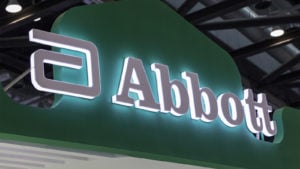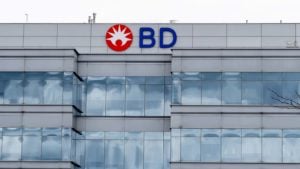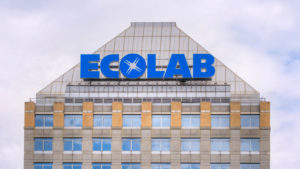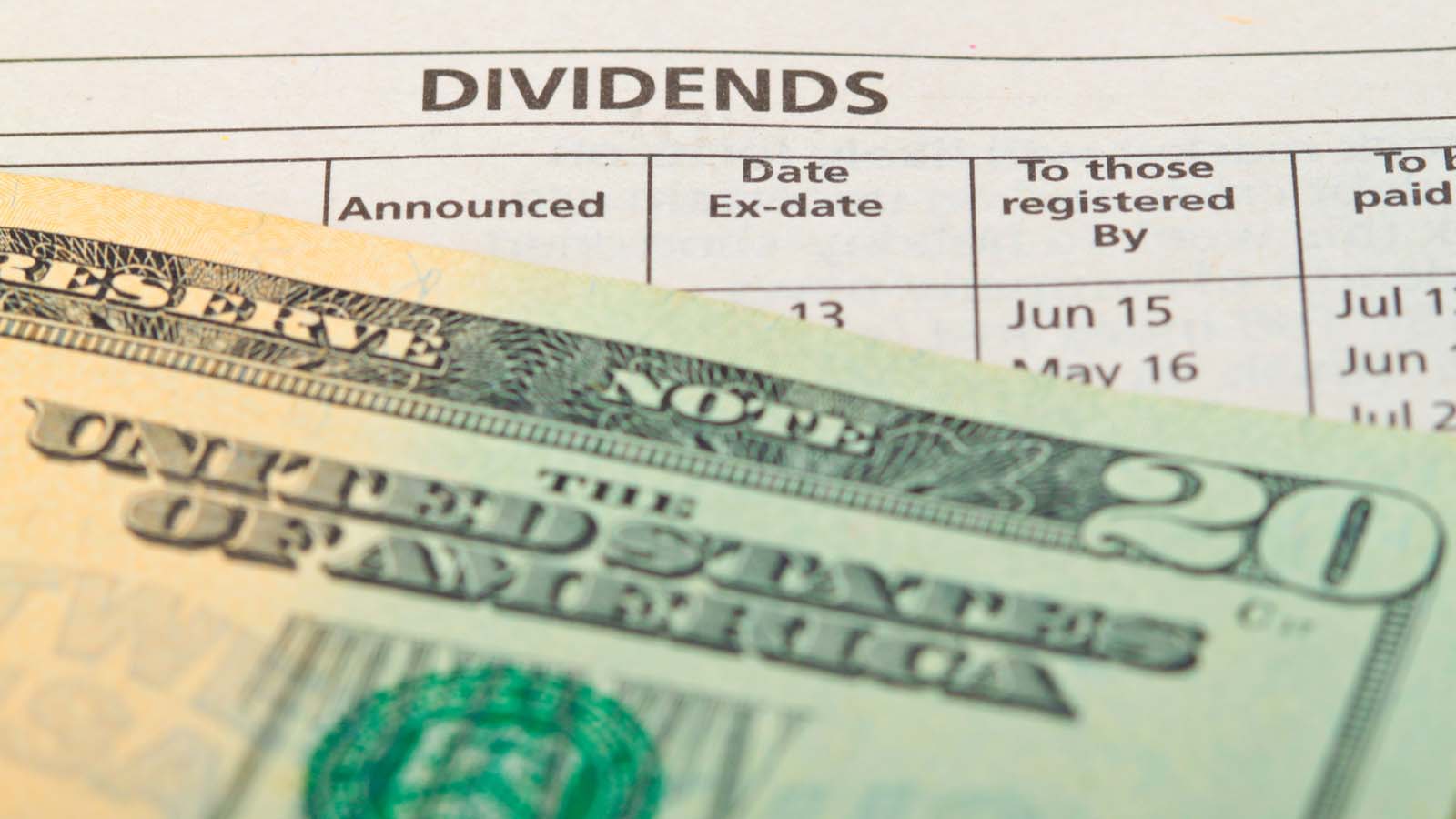Increased concern over inflation and valuations have brought choppiness back to equity markets. As the stock market recovers from a volatile month of trading, investors have turned their attention towards more defensive stocks. For many market participants, dividend shares seem to be the most reasonable plays.
High-yield dividend stocks are prized among income investors, as they offer recurring income. While these stocks may not achieve the breathtaking capital gains of riskier growth stocks, they could provide a safe haven in volatile times.
Recent research led by Greg Filbeck of the Black School of Business at Penn State Behrend highlights how, “Dividend-yield strategies generate investor interest because they have historically offered better risk-adjusted performance.”
With that said, it may be the perfect time to add these best dividend stocks to your portfolio.
- Abbott Laboratories (NYSE:ABT)
- Becton Dickinson (NYSE:BDX)
- Clorox (NYSE:CLX)
- Ecolab (NYSE:ECL)
- Iron Mountain (NYSE:IRM)
- Invesco Dow Jones Industrial Average Dividend ETF (NYSEARCA:DJD)
- iShares International Select Dividend ETF (BATS:IDV)
Investors tend to prefer stocks that provide higher dividend yields. Over the long-run, dividends typically accumulate and grow by leaps and bounds, thanks to the magic of compounding. Some others might also choose to bet on high-growth companies that also distribute dividends, even though at lower rates.
Best Dividend Stocks to Buy: Abbott Laboratories (ABT)

52-week range: $86.16 – $128.54
Dividend yield: 1.65%
Abbott Park, Illinois-based Abbott manufactures diversified line of health care products that include medical devices, diagnostic equipment, nutritional products, testing kits, and branded generic drugs.
The company reported first-quarter results in mid-April. First-quarter sales increased 35% year-over-year (YOY) to $10.5 billion. Global Covid-19 testing-related sales accounted for $2.2 billion in the first quarter. Net earnings skyrocketed to $1.79 billion, representing a whopping 218% increase from the prior-year period. Adjusted diluted earnings per share (EPS) was $1.32, reflecting a 103% YOY increase.
“We’re particularly pleased with the growing momentum of several recently launched products and continue to forecast more than 35 percent EPS growth for the year,” said CEO Robert B. Ford.
Abbott has recently focused on producing cheap Covid-19 self-tests. The company decreased its annual forecast due to declining demand for coronavirus testing. But even with the slowdown in coronavirus-testing sales, Abbott is poised to deliver double-digit growth this year. Market analysts are delighted to see revenue surging in its medical device business, as it used to account for a significant portion of total revenue before the pandemic.
The pharma stock is highly regarded as the group has increased dividends for almost five decades. ABT stock currently hovers around $113 per share, up 3% year-to-date (YTD). Forward P/E and P/S ratios stand at 25.58 and 5.31, respectively.
Becton Dickinson (BDX)

52-week range: $219.50 – $284.97
Dividend yield: 1.38%
New Jersey-headquartered Becton Dickinson is the world’s largest manufacturer and distributor of medical and surgical products such as needles, syringes, and sharps-disposal units. The company also manufactures diagnostic instruments and reagents, flow cytometry, and cell imaging systems.
Becton, Dickinson reported second-quarter results in early May. Quarterly revenue was $4.91 billion, representing an increase of 15.4% over the prior-year period. Topline growth was mainly driven by Covid-19 diagnostic revenue. Net income grew 63% YOY to $299 million. Adjusted EPS increased 25.1% YOY to $3.19.
“We delivered strong revenue, earnings per share, and cash flow growth in the quarter and achieved several important milestones,” said CEO Tom Polen.
Analysts are forecasting more robust results in 2021 as hospitals gradually resume their regular day-to-day procedures. In addition, the company has a market presence in 50 countries and increasingly sees its long-term growth potential in markets outside the U.S.
BDX is expected to become a “dividend king” stock this year after raising its dividend payments for the 49th consecutive year. Its 1.4% dividend may not look that enticing to investors at first glance. However, given the company’s prospects to raise its payouts, investors should earn more on their initial investment the longer they keep BDX shares.
BDX stock hovers around $240 territory, down 4% YTD. It is currently trading within 10% of its 52-week low. Forward P/E and P/S ratios stand at 18.45 and 3.71, respectively. On a valuation basis, the shares don’t look too frothy, especially given the hefty P/E multiples its peers trade on average today. If you’re a long-term investor, potential dips would offer a good entry point into BDX shares.
Clorox (CLX)

52-week range: $170.50 – $239.87
Dividend yield: 2.66%
Oakland, California-based Clorox manufactures consumer products, including cleaning supplies, laundry care, trash bags, cat litter, charcoal, and food dressings. InvestorPlace.com readers are likely to remember how demand for its cleaning products skyrocketed at the start of the pandemic over a year ago.
Clorox reported third-quarter results at the end of April. Sales stayed flat at $1.78 billion. Net loss was $59 million, compared to net income of $241 million in the prior-year quarter. On an adjusted basis, Clorox delivered net EPS of $1.62, representing a 14% YOY decline. Net cash provided by operations increased 11% YOY to $893 million.
“Looking ahead, our portfolio continues to play a meaningful role in addressing consumer megatrends that have accelerated in the last 12 months, positioning us well to fulfill our ambition to accelerate long-term, profitable growth,” remarked CEO Linda Rendle.
As consumers initially focused on sanitation more than ever, the pandemic led to a significant boost in the company’s revenue in previous quarters. But as life slowly gets back to ‘normal,’ investors have left CLX stock out of the recent market rally. Nonetheless, the company has a long track record of thriving through a wide range of economic environments.
CLX stock currently hovers at $175 territory, down almost 14% YTD. The dividend aristocrat stock has raised its payout every year since 1977, recently announcing another quarterly dividend increase of 5%. Forward P/E and P/S ratios stand at 22.68 and 2.94, respectively. A potential decline toward $165 would improve the margin of safety.
Ecolab (ECL)

52-week range: $181.25 – $230.00
Dividend yield: 0.92%
Saint Paul, Minnesota-based Ecolab is a leading provider of water, hygiene, and energy technologies and services. The company produces cleaning and sanitation products for the hospitality, healthcare, and industrial markets. It also provides water treatment and other industrial-scale maintenance services for several industries, including food, healthcare, and oil and gas.
Ecolab reported first-quarter results in late April. Total revenue decreased 4% to $2.89 billion. Adjusted net income fell 19% YOY to $234 million. Adjusted diluted earnings per share declined by 18% to 81 cents, compared to the prior-year period.
Regarding the results, CEO Christophe Beck said, “With rising hygiene standards, increased demand for our sustainable solutions and our unique digital capabilities, we remain confident in our long-term outlook and believe we are well-positioned for continued superior future growth.”
Ecolab has a robust product portfolio that is poised to contribute to its long-term growth. However over the past year it has suffered from adverse effects of the pandemic as many workplaces and industrial locations stayed shut. Segmental weakness has been a concern for investors.
ECL stock has increased its dividend for 29 consecutive years. The company recently raised its quarterly payout to 48 cents a share, scheduled to be paid on July 15.
The shares currently hover at the $208 territory, down 4% YTD. They have gained around 6% over the past 12 months, while the S&P 500 Index has rallied almost 39% during the same period. Forward P/E and P/S ratios stand at 40.82 and 5.15, respectively. Interested investors might consider waiting for a pullback toward the $195 level.
Iron Mountain (IRM)

52-week range: $24.36 – $47.34
Dividend yield: 5.73%
Boston, Massachusetts-based Iron Mountain is a record management services provider serving over 225,000 clients. The company stores records, primarily physical records and data backup media, and provides information management services worldwide.
Iron Mountain reported first-quarter results in early May. Total revenues were flat, increasing 1% YOY to $1.08 billion. Net income decreased 28% YOY to $47 million. While GAAP EPS declined 27% YOY to 16 cents, adjusted EPS increased 14% YOY to 32 cents. The board declared a quarterly cash dividend of 61.85 cents per share for the second quarter.
CEO William L. Meaney said, “We are confident that our delivery of overall revenue growth, together with the expansion of margins due to Project Summit, will enable us to continue our acceleration in cash generation, which will allow us to continue to invest in our future.”
The company aims to push its widely recognized brand name for physical document security into the digital age by focusing on digital storage and data centers. Since data center construction and acquisitions require a significant upfront investment, Iron Mountain has incurred substantial debt in the process. Project Summit seeks to minimize costs across the company during this transition.
As a real estate investment trust (REIT), this company is required to pay out at least 90% of its income as dividends. Subsequently, IRM stock has a fat dividend that yields 5.73%.
IRM stock is currently up around 46% YTD, trading at $43 territory, and has gained 75% over the past 12 months. IRM stock’s forward P/E and P/S ratios stand at 31.85 and 3.00, respectively. A potential decline toward $40 would make the shares more enticing.
Invesco Dow Jones Industrial Average Dividend ETF (DJD)

52-Week Range: $32.52 – $45.81
Dividend Yield: 3.02%
Expense Ratio: 0.08%
Our next choice is an exchange-traded fund (ETF). The Invesco Dow Jones Industrial Average Dividend ETF gives exposure to dividend-paying firms of the Dow Jones Industrial Average, ranking them by their 12-month dividend yield over the past year. The fund is rebalanced twice a year.
DJD was first listed in December 2015, and assets under management are close to $165 million. More than 55% of the fund is allocated to the top 10 names. Currently, the top stocks include International Business Machines (NYSE:IBM), Chevron (NYSE:CVX), Dow (NYSE:DOW), Verizon Communications (NYSE:VZ), and Walgreens Boots Alliance (NASDAQ:WBA).
Since the start of the year, DJD is up about 15%. The trailing P/E ratio and P/B ratios are 18.85 and 3.84, respectively. In the case of short-term profit taking, interested readers would find better value around $40.
iShares International Select Dividend ETF (IDV)

52 Week Range: 23.90-34.15
Dividend Yield: 5.17%
Expense Ratio: 0.49%
My final pick for today is a fund focused on businesses headquartered outside the U.S. The iShares International Select Dividend ETF provides exposure to relatively high dividend-paying firms in developed markets other than the U.S.
IDV, which currently has 92 holdings, has been trading since 2007. Financials (30.32%) top the list of sectors, followed by Utilities (19.90%), Materials (12.97%), Communication (7.64%), Industrials (6.13%), Energy (6.72%), and Consumer Staples (5.13%). The top 10 holdings comprise around a third of assets of $4.5 billion.
Several of the companies most readers are likely to be familiar with include Rio Tinto (NYSE:RIO), British American Tobacco (NYSE:BTI), Canadian Imperial Bank of Commerce (NYSE:CM), ACS Actividades De Construccion Y Servicios (OTCMKTS:ACSAY), Hang Seng Bank (OTCMKTS:HSNGY) and SwissCom (OTCMKTS:SCMWY).
Since the start of 2021, IDV is up about 11% and saw a multi-year high in May. Its trailing P/E and P/B ratios stand at 11.48 and 1.20, respectively. Interested investors could find value around these levels.
On the date of publication, Tezcan Gecgil did not have (either directly or indirectly) any positions in the securities mentioned in this article. The opinions expressed in this article are those of the writer, subject to the InvestorPlace.com Publishing Guidelines.
Tezcan Gecgil, Ph.D., has worked in investment management for over two decades in the U.S. and U.K. In addition to formal higher education in the field, she has also completed all 3 levels of the Chartered Market Technician (CMT) examination. Her passion is for options trading based on technical analysis of fundamentally strong companies. She especially enjoys setting up weekly covered calls for income generation.
